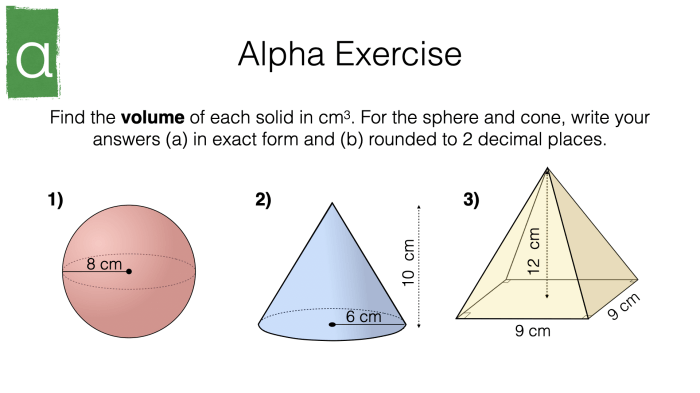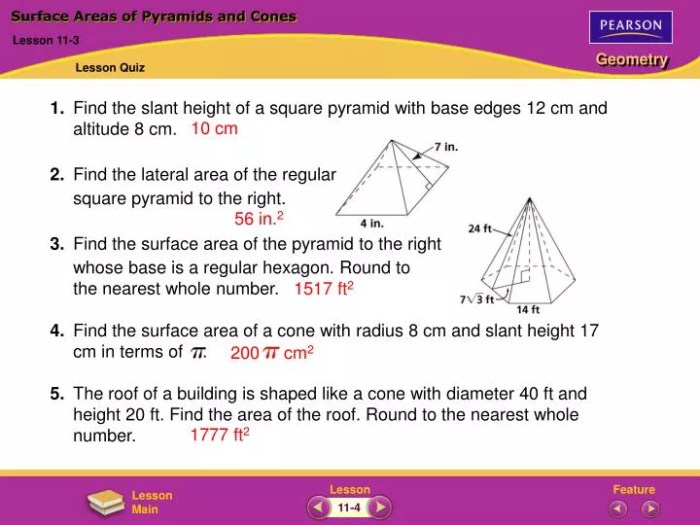Surface areas of pyramids and cones quiz – Embark on an enlightening journey into the realm of surface areas of pyramids and cones with this captivating quiz. Delving into the intricacies of these geometric shapes, this assessment challenges your understanding and empowers you to grasp the fundamental concepts that govern their surface areas.
Prepare to unravel the mysteries of pyramids and cones as you navigate through a series of thought-provoking questions. Discover the formulas that unlock the secrets of their surface areas and witness how the base area and height interplay to determine their overall surface area.
Surface Areas of Pyramids and Cones

The surface area of a three-dimensional object is the total area of its surfaces. For pyramids and cones, the surface area includes the base area and the lateral surface area. The base area is the area of the base of the pyramid or cone, while the lateral surface area is the area of the sides.
Pyramids
The formula for calculating the surface area of a pyramid is:
SA = B + (1/2)PL
where:
- SA is the surface area
- B is the base area
- P is the perimeter of the base
- L is the slant height (the height from the apex to the midpoint of a side)
For example, to find the surface area of a square pyramid with a base length of 4 cm and a slant height of 5 cm, we would use the formula:
SA = B + (1/2)PL= (4 cm)^2 + (1/2)(4 cm)(5 cm)= 16 cm^2 + 10 cm^2= 26 cm^2
Cones, Surface areas of pyramids and cones quiz
The formula for calculating the surface area of a cone is:
SA = πr^2 + πrl
where:
- SA is the surface area
- π is a mathematical constant approximately equal to 3.14
- r is the radius of the base
- l is the slant height (the height from the apex to the edge of the base)
For example, to find the surface area of a cone with a base radius of 3 cm and a slant height of 4 cm, we would use the formula:
SA = πr^2 + πrl= π(3 cm)^2 + π(3 cm)(4 cm)= 9π cm^2 + 12π cm^2= 21π cm^2 ≈ 65.97 cm^2
Answers to Common Questions: Surface Areas Of Pyramids And Cones Quiz
What is the formula for calculating the surface area of a pyramid?
The surface area of a pyramid is given by the formula: SA = (1/2) – P – l + B, where SA is the surface area, P is the perimeter of the base, l is the slant height, and B is the area of the base.
How do I calculate the surface area of a cone?
The surface area of a cone is given by the formula: SA = πr² + πrl, where SA is the surface area, r is the radius of the base, and l is the slant height.
What is the relationship between the base area and the surface area of a pyramid?
The surface area of a pyramid is always greater than its base area. This is because the surface area includes the area of the base plus the area of the lateral faces.

